#Egyptian fashion
Photo
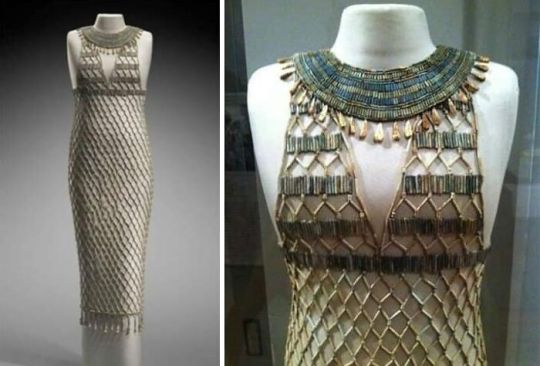
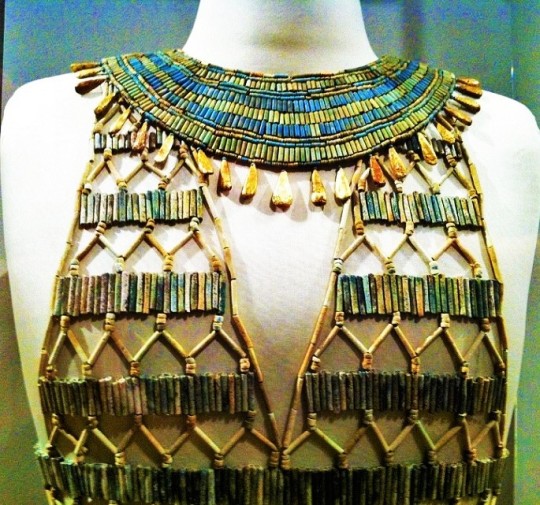
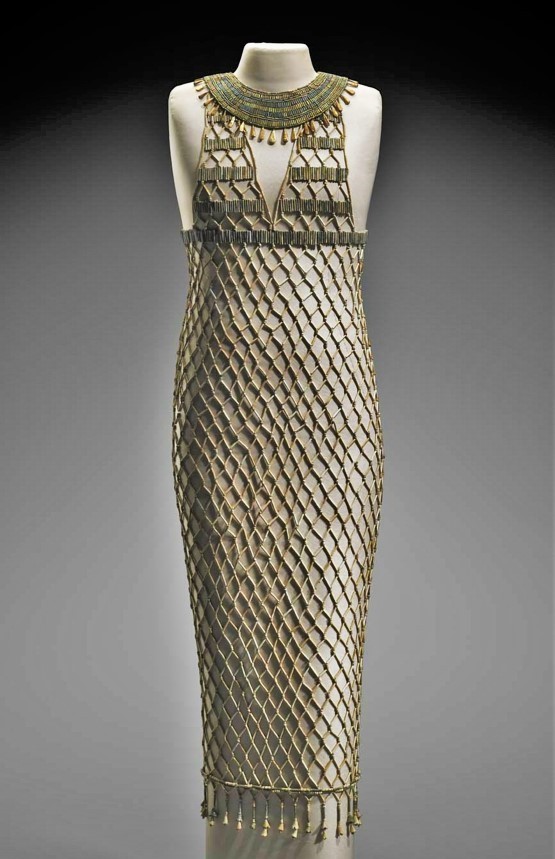
4,500 year old Egyptian beaded dress
This beadnet dress is the earliest surviving example of such a garment.
It has been painstakingly reassembled from approximately seven thousand beads found in an undisturbed burial of a female contemporary of King Khufu. From Giza, tomb G 7440 Z. 1927: excavated by the Harvard University.
Although their string had disintegrated, a few beads still lay in their original pattern on and around the mummy, permitting an accurate reconstruction. The color of the beads has faded, but the beadnet was originally blue and blue green in imitation of lapis lazuli and turquoise.
(source)
3K notes
·
View notes
Text
Ṣafa; Egyptian Women with coins in their hair

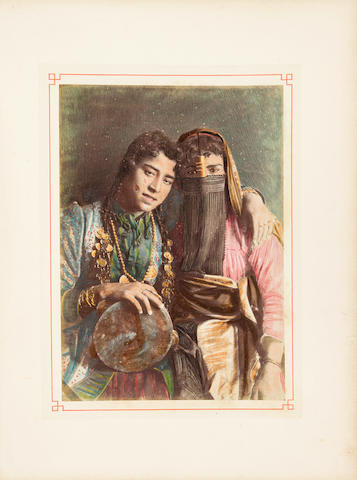



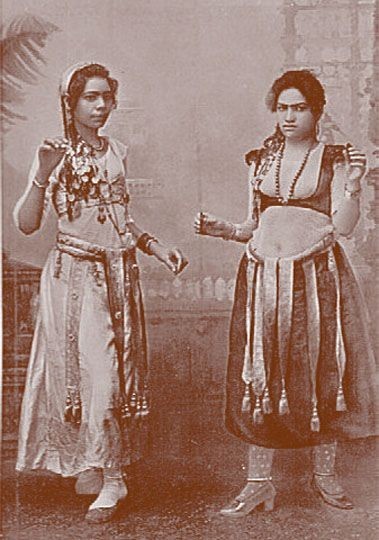
This style is attested in Edward William Lane's work from the 1830s. He describes it as follows:
The hair, except over the forehead and temples, is divided into numerous braids or plaits, generally from eleven to twenty-five in number, but always of an uneven number: these hang down the back. To each braid of hair are usually added three black silk cords, with little omaments of gold, &c., attached to them. For a description of these, which are called "ṣafa," I refer to the Appendix. Over the forehead, the hair is cut rather short; but two full locks (called "maḳàṣees"; singular "maḳṣooṣ") hang down on each side of the face: these are often curled in ringlets and sometimes plaited. (Egyptian women swear by the side-lock (as men do by the beard), generally holding it when they utter the oath, "Wa-ḥayát maḳṣooṣee!") [Page 45-46]
Further detail comes from an appendix focusing on jewelry:

It has been mentioned that all the hair of the head, except a little over the forehead and temples, is arranged in plaits, or braids, which hang down the back. These plaits are generally from eleven to twenty-five in number; but always of an uneven number: eleven is considered a scanty number: thirteen and fifteen are more common. Three times the number of black silk strings (three to each plait of hair, and each three united at the top), from sixteen to eighteen inches in length, are braided with the hair for about a quarter of their length; or they are attached to a lace or band of black silk which is bound round the head, and in this case hang entirely separate from the plaits of hair, which they almost conceal. These strings are called "ḳeyṭáns" and together with certain ornaments of gold, &c., the more common of which are here represented, compose what is tenned the "ṣafa". Along each string, except from the upper extremity to about a quarter or (at most) a third of its length are generally attached nine or more of the little flat ornaments of gold called "barḳ." These are commonly all of the same form, and about an inch, or a little more, apart; but those of each string are purposely placed so as not exactly to correspond with those of the others. The most usual forms of barḳ are Nos. 1 and 2 of the specimens given above. At the end of each string is a small gold tube, called "másoorah," about: three-eighths of an inch long, or a kind of gold bead in the form of a cube with a portion cut off from each angle, called "ḥabbeh." Beneath the másoorah or ḥabbeh is a little ring, to which is most commonly suspended a Turkish gold coin called "Ruba Fenduḳlee," equivalent to nearly 1s. 8d. of our money, and a little more than half an inch in diameter. Such is the most general description of ṣafa ; but there are more genteel kinds, in which the ḥabbeh is usually preferred to the másoorah, and instead of the Ruba Fenduḳlee is a flat ornament of gold, called, from its form, "kummetrè," or "pear." There are also other and more approved substitutes for the gold coin; the most usual of which is called "shiftisheh," composed of open gold work, with a pearl in the centre. Some ladies substitute a little tassel of pearls for the gold coin; or suspend alternately pearls and emeralds to the bottom of the triple strings; and attach a pearl with each of the barḳ. The ṣafa thus composed with pearls is called "ṣafa loolee.'' Coral beads are also sometimes attached in the same manner as the pearls. From what has been said above, it appears that a moderate ṣafa of thirteen plaits will consist of 39 strings, 351 barḳ, 39 másoorahs or ḥabbehs, and 39 gold coins or other ornaments; and that a ṣafa of twenty-five plaits, with twelve barḳ to each string, will contain no fewer than 900 barḳ, and seventy-five of each of the other appendages. The ṣafa appears to me the prettiest, as well as the most singular, of all the ornaments worn by the ladies of Egypt. The glittering of the barḳ, &c., and their chinking together as the wearer walks, have a peculiarly lively effect. [Page 572-574]
He goes onto describe a similar style worn by poorer women, but I probably will do its own post because it was still being worn in the Western Oases near the 1970s, and really doesn't use coins or barḳ.
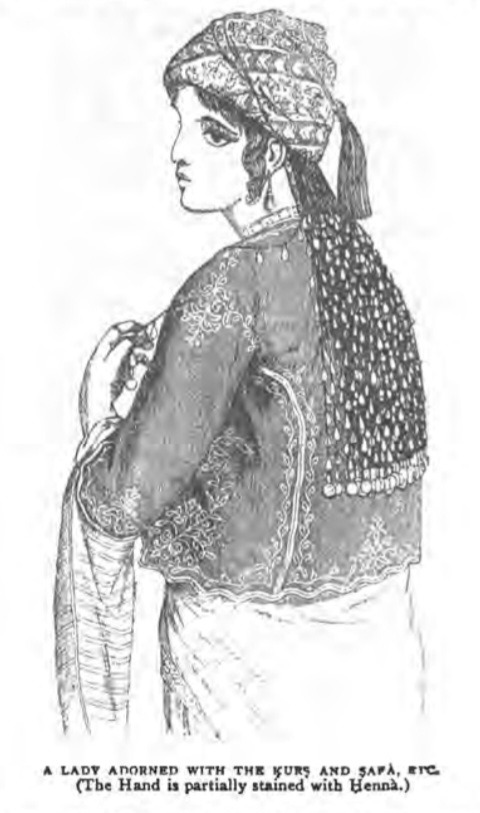

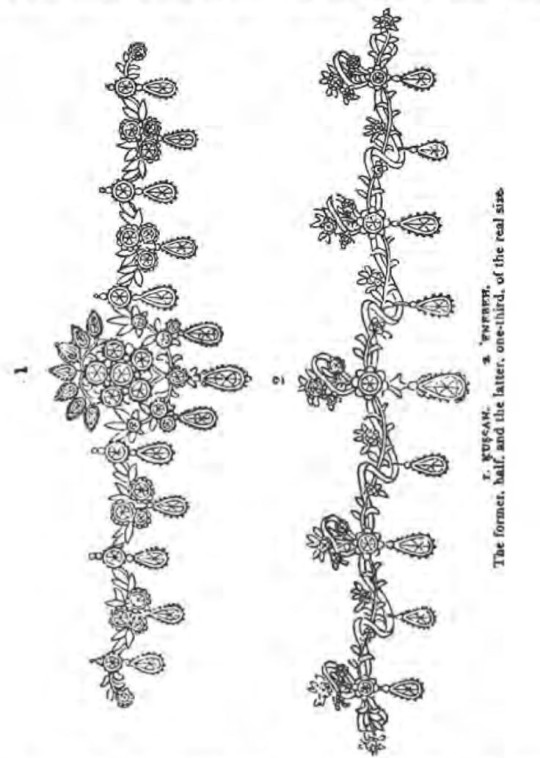
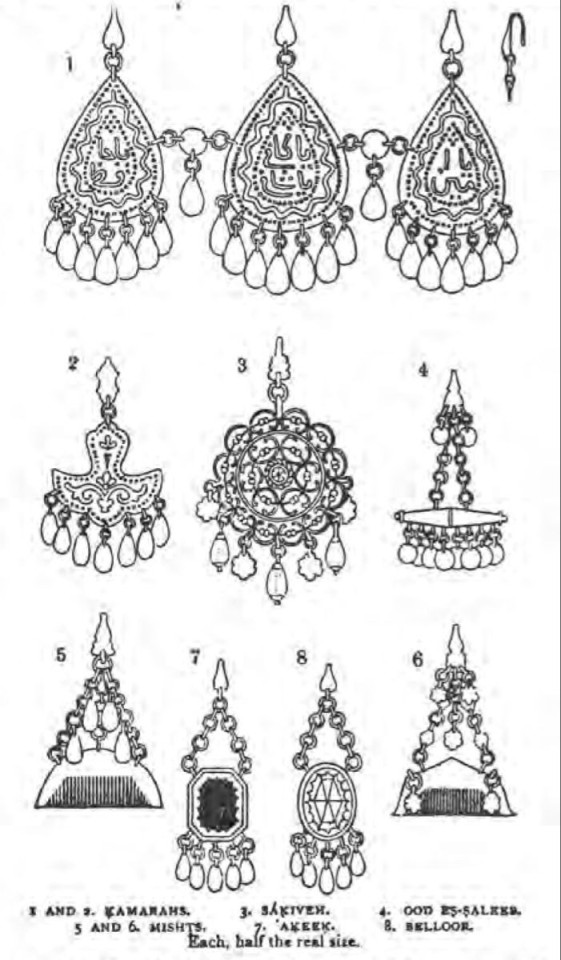
This hairstyle initally was also worn with a particular headdress of upper and middle class Egyptian women, called a rabṭah, which is essentially a woman's turban. It is made with a tarboosh or ṭáḳeeyeh (I think Lane might mean taqiyah) as the base, with muslin printed or painted scarves called faroodeeyeh, or crepe scarves wrapped around it in a high, flat pattern. Over the tarboosh was stitched down an ornament called a ḳurṣ, made of metal and often gems, and distinguished by material- generally wether it was made of diamonds (ḳurṣ almás) or of gold (ḳurṣ dahab), with the latter often having an emerald or ruby cabochon in the center. A ḳuṣṣah/'enebeh (items similar to the Algerian khit errouh) or shawáṭeḥ (worn in the same manner, but made of pearl strands or netted beading with an emerald in the center) may also be attached, as well as many other small pendants and pins. It sometimes also had silver or gilt spangles attached to the front, in which case the rabṭah was made of rose or black muslin or crepe.
As can be seen from the sharper photos of bare headed women, the braids themselves start a few inches away from the scalp, not directly at it, probably owing to the texture of most of these women's hair.
While initally as Lane describes, this was a hairstyle for the middle and upper class, as those classes began to look increasingly at European fashions under the Khedivate and British Occupation, the hairstyle mainly continued use among the poor, dancers, and some Beoduins.
This style of many braids with bangs and often a turban over top is potentially rather old in Ottoman Turkish art, with examples appearing from the 17th century- though they are unfortunately unclear, as they could also be stylized tendrils of hair, and in some cases, clearly are such.

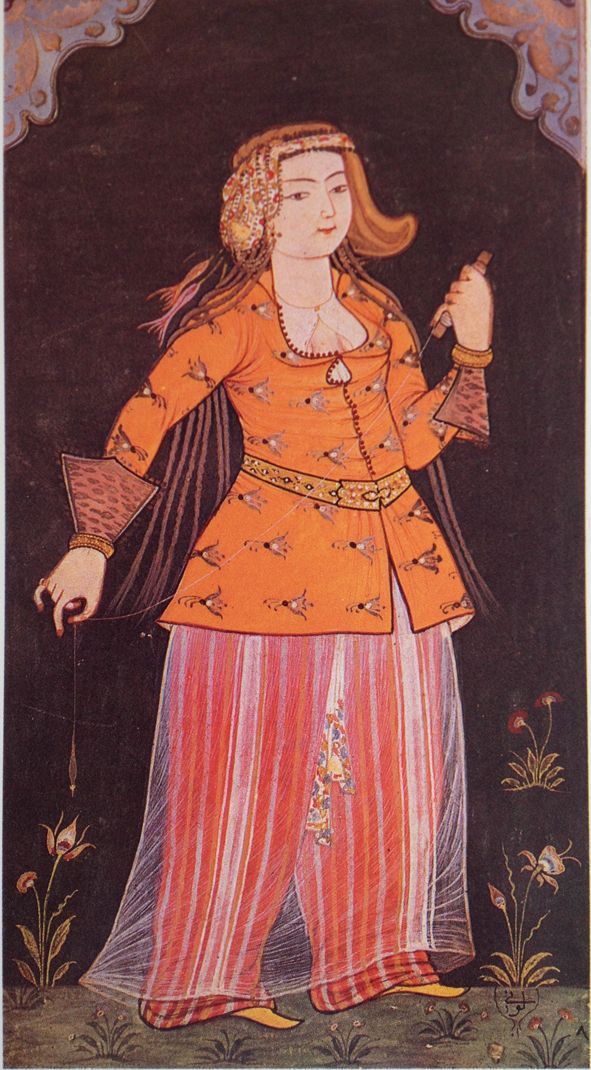

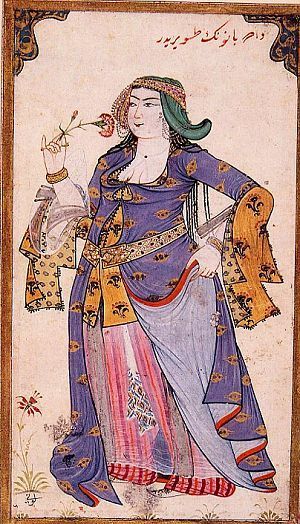
Similar styles of many long braids started a few inches away from the scalp are still used in Turkic groups such as Uzbeks and Uyghurs, particularly while wearing folk dress.
Sources/further reading:
Edward William Lane, The Manners and Customs of the Modern Egyptians.
Heather D. Ward, Egyptian Belly Dance in Transition: The Raqs Sharqi Revolution, 1890-1930
Unfortunately I don't have more to offer you, even for the Turkish style.
106 notes
·
View notes
Text
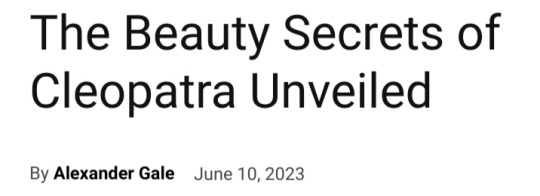
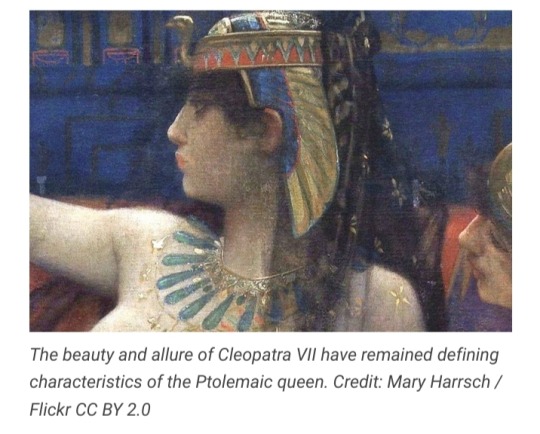
A significant part of Cleopatra VII Philopator’s enduring reputation is as one of history’s most famous femme fatales, renowned for her beauty and wit which attracted not one, but two of the Roman Republic’s most powerful men.
Whether or not this popular characterization of Cleopatra is historically accurate, her reputation has led many to wonder whether she had any particular beauty secrets that she used to ensure Julius Caesar and Mark Anthony.
The historical record does provide some clues as to how the Ptolemaic dynasty’s most famous ruler presented herself, from hairstyles to clothing, and even makeup.
Although we cannot be entirely certain how she presented herself, there are enough historical details to piece together a reasonable picture of how Cleopatra might have presented herself.
Was Cleopatra really a beauty?
As the old adage goes, “Beauty is in the eye of the beholder.”
As far as the ancient sources are concerned, the question of Cleopatra’s beauty raised mixed responses, with some ascribing an irresistible physical appearance to her and others attributing her allure more to her intellect and charm.
For example, Cassius Dio (164 to c. 235 AD), an ancient Greek historian, described Cleopatra as “a woman of surpassing beauty.”
During the first meeting between Julius Caesar and Cleopatra, Cassius Dio wrote:
"Caesar, upon seeing her and hearing her speak a few words, was so completely captivated that the Roman general acquiesced immediately to Cleopatra’s requests."

Plutarch (c.46 to c.119 AD) also briefly commented on the Ptolemaic queen’s appearance in his Life of Mark Anthony.
Contrary to Cassius Dio, Plutarch did not reckon Cleopatra’s beauty to be particularly noteworthy but instead praised her intelligence and character.
“Her beauty, so we are told, was not itself outstanding; it did not immediately strike those who saw her; yet being with her had an inescapable hold; when talking with her, she was persuasive, and the character which surrounded her whole manner in company had a force to it,” wrote the Greek historian and philosopher.
Hair and makeup
In the few surviving marble busts of Cleopatra, she is depicted wearing her hair tied at the back in a bun.
Historians like Paul Edmund Stanwick refer to this as a “melon hairstyle.”
Coinage depicting the queen shows her wearing the same hairstyle.
Depictions of Cleopatra with this hairstyle also show her wearing a diadem, a symbol of royal power adopted by many Hellenistic rulers who succeeded Alexander the Great as the masters of the divided fragments of his empire.

Professor Diana Kleiner of Yale University has identified two more hairstyles worn by Cleopatra.
One of these hairstyles emulated those worn by Macedonian queens, which is unsurprising given Cleopatra’s lineage.
To achieve this style, the hair was carefully divided into individual curls, which were typically swept away from the face and elegantly gathered into a bun positioned at the back.
According to Professor Keline, it may have been worn during travel.
The other hairstyle was “the usual Egyptian wigged headdress that had its origins in Pharaonic times.”
In this case, the main point of attention would have been the headdress rather than the hair itself, with a rearing cobra made of precious metal proudly displayed.
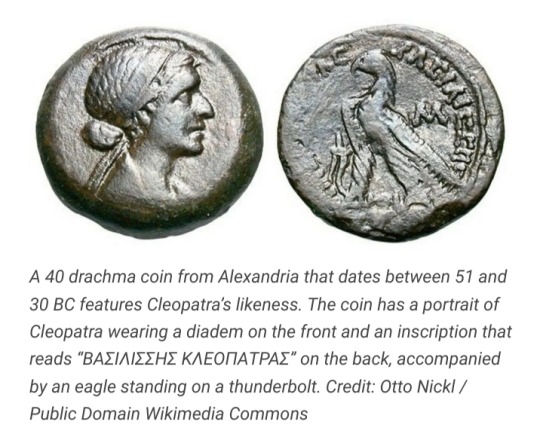
Professor Kleiner explains that “Cleopatra appears to have worn different coiffures in different circumstances, playing to her audience, so to speak, in life and in art.”
It would have been important for her to present herself in the Hellenistic fashion to the Greek elites who held the most senior positions in Ptolemaic Egypt, but also in traditional Egyptian fashions for her ruler to appear legitimate to a native Egyptian audience.
Regarding the Ptolemaic queen’s makeup choices, she would darken her eyebrows and enhance her eyeliner using black kohl, creating an elongated look.
The application of deep blue eyeshadow extended gracefully up to her brows, further accentuating her eyes.
Additionally, Cleopatra embraced the fashionable trend of adorning her hands with intricate henna patterns, a popular practice during that era in Alexandria.
Clothing
Cleopatra wore a variety of Greek, Egyptian, and Roman outfits intended to accentuate her beauty.
The selection of these styles would have been dependent on the contexts in which the queen appeared, as it was important for her to present herself accordingly to her friends, foes and subjects.
One of the styles she wore combined Greek and Egyptian aesthetic sensibilities and is seen depicted on sculptures of other Ptolemaic queens.
This style consisted of a sheer dress, likely of a semi-transparent material, which left the bare breasts exposed in a manner popular amongst native Egyptian women.
The depictions of other Ptolemaic queens wearing this style are consistent with the writings of the Roman poet Lucan, who claimed that she wore a transparent dress that exposed her breasts, likely made of Chinese silk.
Lucan also described the jewelry she wore, writing that “her baleful beauty inordinately painted, covered with Red Sea pearls, a fortune in her hair and around her neck, weighed down with jewelry.”
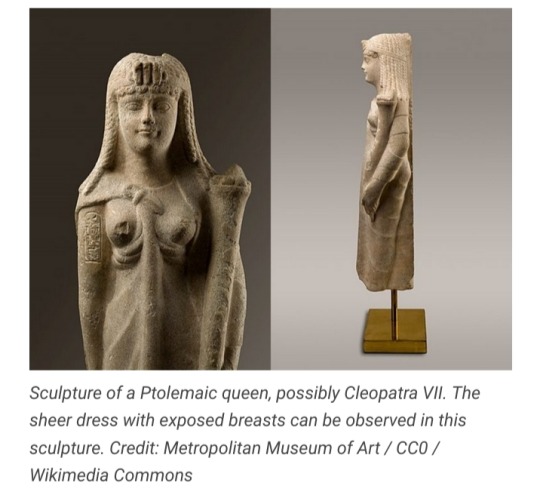
NOTE:
Cleopatra VII Thea Philopator (70/69 BC – 10 August 30 BC) was Queen of the Ptolemaic Kingdom of Egypt from 51 to 30 BC and its last active ruler.
A member of the Ptolemaic dynasty, she was a descendant of its founder, Ptolemy I Soter, a Macedonian Greek general and companion of Alexander the Great.
#Cleopatra VII Thea Philopator#Cleopatra#Queen of the Ptolemaic Kingdom of Egypt#Ptolemaic Dynasty#Ancient Egypt#Ptolemy I Soter#Ancient Macedonians#Julius Caesar#Mark Anthony#Cassius Dio#Plutarch#melon hairstyle#Egyptian fashion#Lucan#Ptolemaic Queen#Hellenistic fashion#Alexandria#Beauty Secrets of Cleopatra
43 notes
·
View notes
Text

I've seen some art of Genderbends of some JJBA characters online(most of them being from Golden Wind and Stardust Crusaders) and I wanna do my take on the Crusaders.
My apologies if these looked lazy, there isn't a lot of feminine clothes to work with for these two without making it look revealing, as well as going though tons of French and Egyptian baby names.
Anyways, Jean Pierre Polnareff is now Jeanne Pierre Polnareff, I didn't really do much with her except borrowed OG!Polnareff's drip from his debut chapter in the manga because it looked pretty feminine, so all the golden jewelry and rings that he wore in his debut now belong to his genderbend.
I also imagine that F!Polnareff would have a golden hair barrette on the back of her head and have her lips painted red to match her earrings.
And here we have Muhammad Avdol as Maryam Avdol, I didn't do a lot of changes with her except feminized her iron trousers, tuck in her sleeves, and turn Avdol's scarf into a head wrap.
The reason for that is because Egyptian women's fashion during the 80's was becoming a lot more conservative(at least from what I heard, forgive me if I get it wrong), so it was appropriate for F!Avdol to dress this way.
But I did add blue eyeshadow to match her accessory and make her eyes pop out more because of the orange.
#artwork#jojo's bizarre adventure#jean pierre polnareff#muhammad avdol#genderbend#egyptian fashion#hijab
14 notes
·
View notes
Text
The process of drawing another Egyptian Dany! with little Missandei by her side.
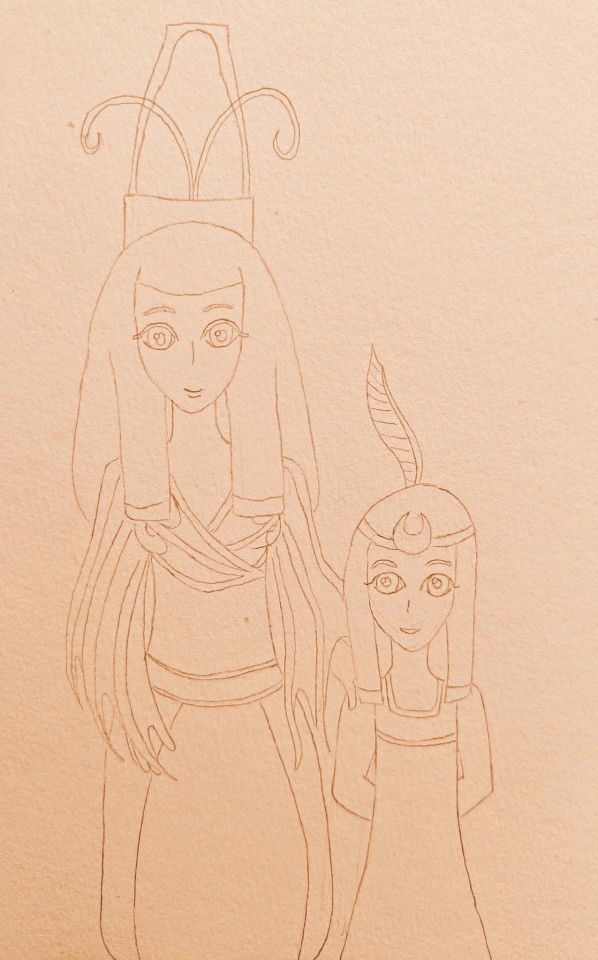
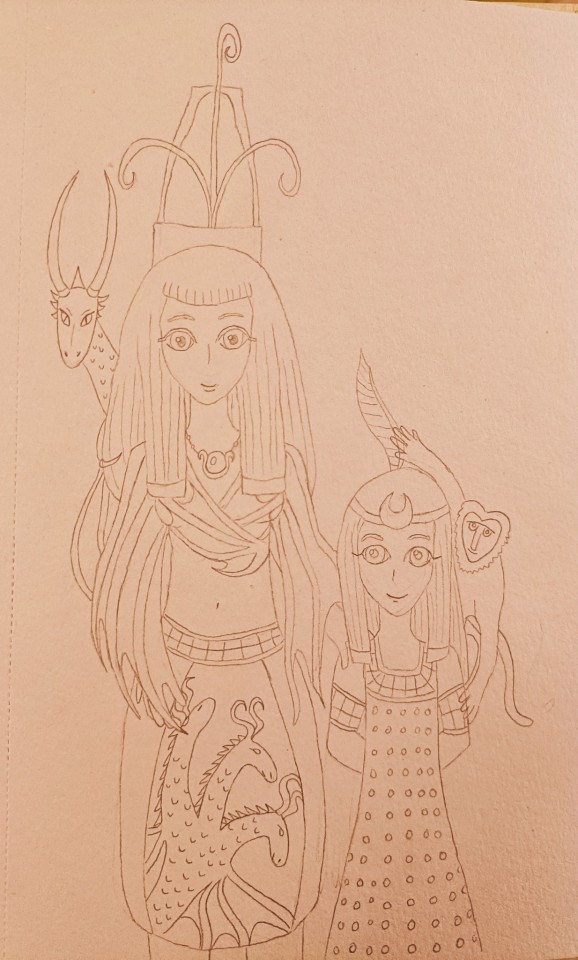

Daenerys is dressed as Horus, god-king of Egypt who protects hiw kingdom from evil and defeated the evil god Seth to avenge his father. All pharaohs are associated with Horus. Here the Falcon symbols are replaced with Dany's dragon symbolism. And she wears Viserion on her shoulder + wears a necklace with the sun disk.
Missandei's look is inspired from three gods (all related in some way) : her dress is that of Sheshat, a goddess of wisdom and writing ; she bears a moon crescent for Sheshat's father Thot, also god of writing and wisdom and many kinds of knowledge, and of paramount importance in the Egyptian Pantheon (the moon is one of his symbols, like the baboon on Missandei's shoulder) - he's the patron god of scribes (Missandei being called a "little scribe" in the books). And lastly, she has on her head the feather of Maat, goddess of truth and justice (and who is also Thot's wife).
Together, they represent the royal power, it's justice and it's balance.
#egyptian daenerys#daenerys stormborn#daenerys targaryen#house targaryen#missandei#the little scribe#asoiaf art#valyrianscrolls#egyptian fashion#egyptian mythology
27 notes
·
View notes
Photo

Egyptian Mermaid for #historicalmermaid on instagram
#mermay#mermaid#mermay 2023#mermay2023#mermaid drawing#ancient egypt#egyptian character#ancient egypt fashion#egyptian fashion#historical fashion#historical characters#character design#illustration#digital drawing#digital illustration
25 notes
·
View notes
Text
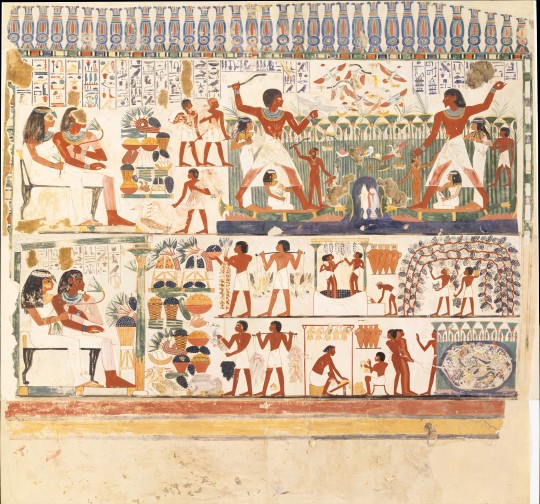
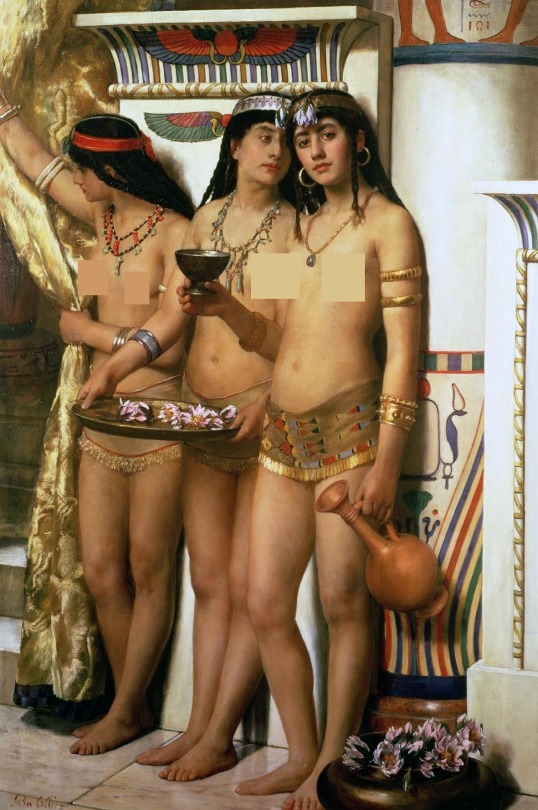

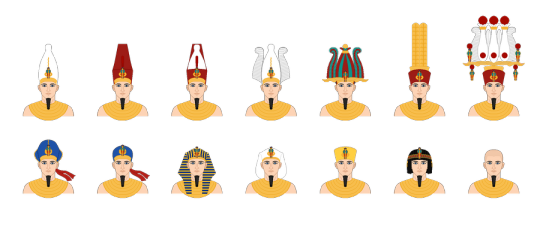
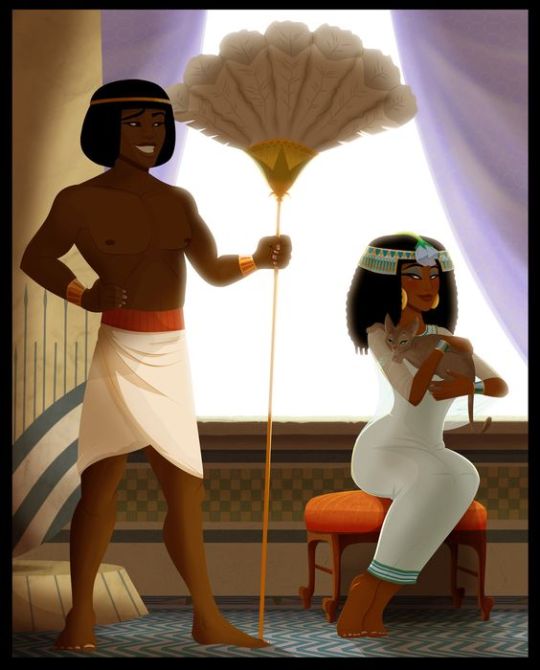



egyptian fashion
3 notes
·
View notes
Text


I found this dress up game on Doll Divine and used it to recreate my Jojo OCs Eris and Medea: Jewel of the Nile ~ Egyptian Regal Fashion (dolldivine.com)
I'd figured it be appropriate since they both debuted in Part 3, which takes place in Egypt.
4 notes
·
View notes
Text

I did another historical outfits drawing, this time using two fashion history books cause I wanted a bit of a wider variety. My favorite is probably the Tudor one
#1600s dresses my beloved#the era titles are also vague#egypt was fun id like to do more of those#ironically because the greek dress is purple it might actually be the most expensive dress on the page#cause ya know that purple snail dye was expensive#art#my art#fashion history#traditional art#regency era#regency clothing#guilded age#tudor era#tudor fashion#medieval fashion#Egyptian fashion#also i know that the tudor one shouldn't have such thick dark eyebrows since i obviously took a lot of inspiration from lizzy i#but they just ended up really dark when i inked it#other than that i like that one though
3 notes
·
View notes
Text
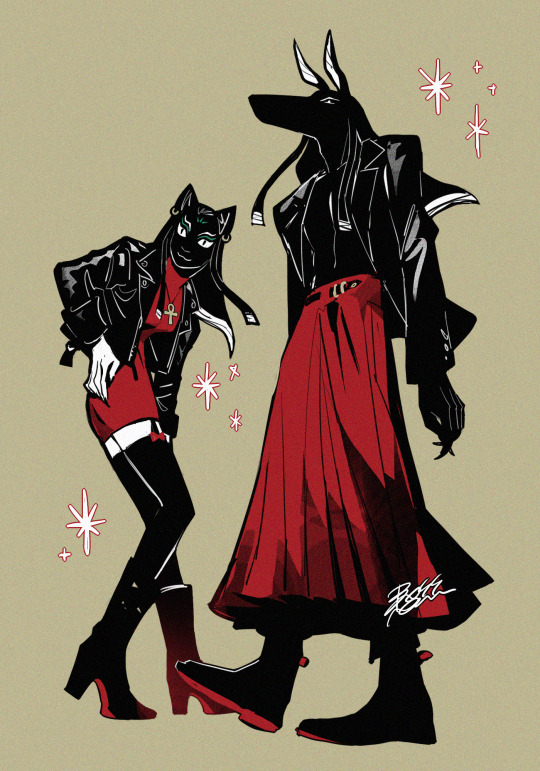
1K notes
·
View notes
Text




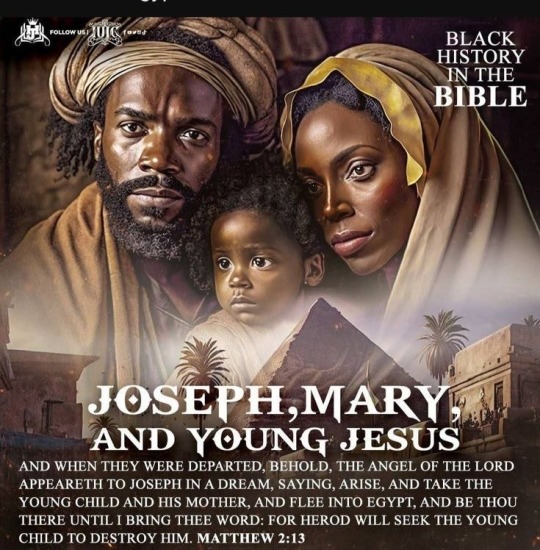

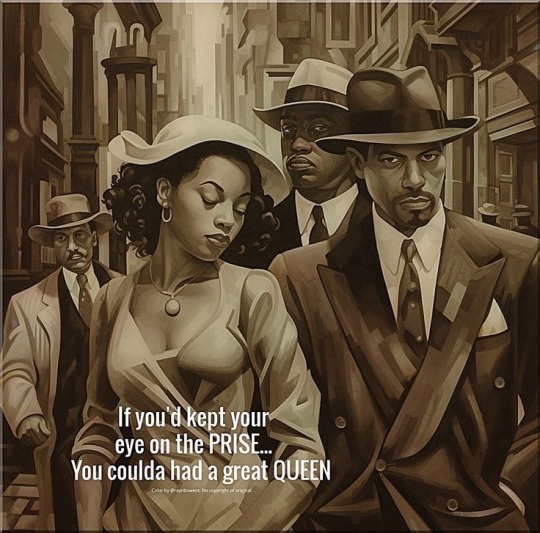
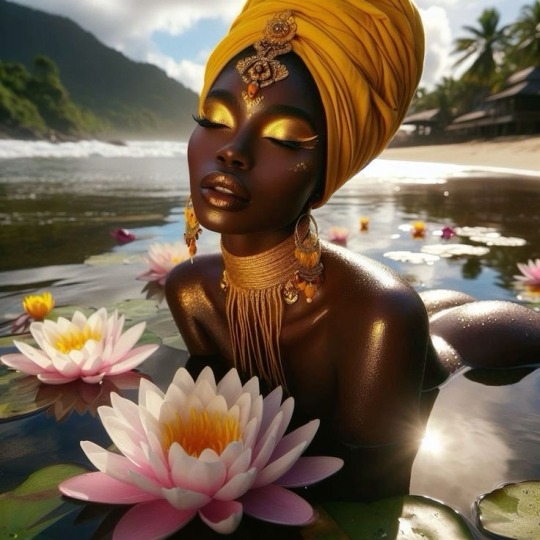

#black community#original photographers#black people#artwork#graphic design#black art#black power#black history#black culture#black family#black woman#black panther#black men#black history month#black knowledge#black love#blacklivesmatter#black representation#black relationships#black children#black king#black queen#black africans#africa fashion#egypt nt#egyptian art#african art
246 notes
·
View notes
Text
Talking about the Qabā'. Again.
The last time I talked about the Qaba was in another post where i was very excited to have found a miniature from either Syria or Egypt that matched an extant piece of fabric from a close time period. Today I'm going to talk about the garment itself more, and it's relatives. The impetus for this is that a few months ago, I was scrolling through hanfu blogs- if you've read the article I published in Egyptian Migrations, you know I have an interest not just in Egyptian fashion, but how other cultures navigate fashion, both in their unique subcultures and traditional styles. While doing so I came across the tieli (貼裏), and quite liked the look of it, so I searched up the garment and began looking more at it. As I was scrolling through the many pretty pictures, I realized hey- I've seen this before. This looks a lot like that coat with the red foliage pattern!
Turns out this was because they're related.
They're not the only ones either- the Qabā' (as both Farsi and Arabic call it), the Tieli, the Indian Jama, the Korean Cheolik, and more, all bear a resemblance to each other. Covergent evolution happens plenty of course, but in this case there's something of an established link. In fact while doing my research, I found a paper specifically about this garment family (The Dress of the Mongol Empire: Genealogy And Diaspora of the Terlig by Woohyun Cho, Jaeyoon Yi, and Jinyoung Kim), though without explicit mention of the Qabā'.
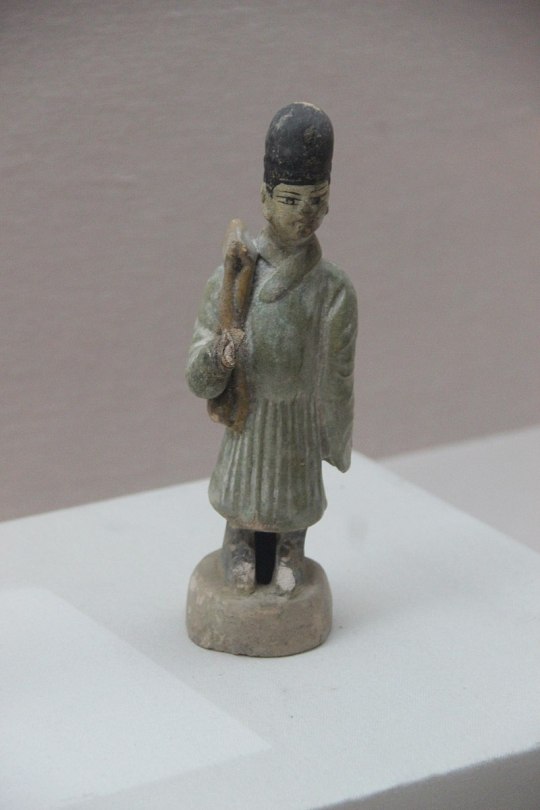

The name and garment Tieli come from the Mongolian Terlig and Jisün (also called a Zhama (诈玛 or 詐馬), establishing a possible linguistic connection to the Jama) during the Yuan dynasty. Like many Mongolian traditional garments, it's well suited to horseback riding, which which what many Mamluk depictions also show the Qabā' being worn during. It could be round or cross collar (the combination of the two is unique to the Qabā'). The key features of the garment were a knee to calf length skirt that was gathered or pleated, a close fitting bodice cut separate from the skirt, close fitting sleeves, a corded waist which usually lead into the ties that closed the garment. According to the aforementioned trio, the garment was originally made of hides, and the waist detail found in the original Terlig, lost in other cultures renditions, is an indication of this. The Terlig, known before this point, was introduced to China, India, and Korean when the Monglian Empire was an active political entity in the 13th century and onwards, and this is the case for this style of Qabā' as well. During the 13th century, the Ilkhanate was established in the former territory of the Khwarazmian Empire, after a political incident where the Shah ordered the execution of a group of merchants sent by the Mongolian Empire lead to a long military conflict. The Ilkhanate went on to control large portions of Turkey, Syria, Iraq, and the Caucasus, as well as Afghanistan, Turkmenistan, and Pakistan. Ultimately the Ilkhanate tried, but never did, conquer Egypt, which was ruled by the Mamluks at the time.
However, it did leave a cultural influence behind. Reference to this origin for this style of qaba can be found in one of the two names for the Qabā': al-aqbiya al-tatariyya or qabā' tatarī, meaning the Tatar coat or Tatar way of wearing a coat. Tatar, in this instance, is being used to refer to Mongolians. A similar distinction can be found in the Jama, where Muslims fasten it on the right in the Mongolian style (brought to my attention by the paper mentioned before). The tatarī is fastened in the same way, ties on the wearer's right of the body. The other style of Qabā' (al-aqbiya al-turkiyya) is the same, but fastens on the opposite side of the body. The Mamluks preferred the tatarī, but it was not the exclusive style worn. Along with this, some Qabā' fastened in the center front.
The Jisün was a type of Terlig, made of one color of silk and gold, worn as a robe of honor by officials during the Yuan dynasty. During the later Ming dynasty, it became the dress of certain military officials. It had different varieties for seasons and social status. It also progenitated the Yesa (曳撒), which was longer and more widely worn than the Jisün. The Feiyufu (飞鱼服) was a Ming variant of the Tieli, and another type of honor robe. The Qing dynasty Chaofu also seems to have taken the terlig into account when it was designed.

The Cheolik has a crossover collar, pleated skirt, and may have quite long, wide sleeves. Political marriages with Mongolian courts likely helped this garment take root. This garment is still worn today as Korea, like China, has revitalized its traditional clothing. It is mostly by women today as far as I can tell, though historically it was a masculine garment. It has a longer hem than the Terlig. It also sometimes had a higher waistline.
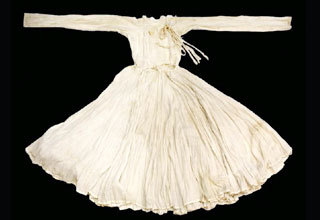
The Jama was introduced by the Mughal dynasty, and unlike the other garments listed here which typically used rectangles and triangles for constructing clothes, the one pattern I've seen for it taken from an extant garment (as opposed to being a guess) shows a skirt made of gores and set in sleeves with a gusset. Another example, laid flat, shows rectangular sleeves with a gusset, but the skirt cannot be determined. It was later renamed to sarbgati. It typically has a crossover fastening, though I have seen one that closed in the center front. The ties are especially prominent and decorated, which overall is not the case in the rest of the garment family. Gold bands on the sleeves and collar are sometimes found as decoration. It also has a longer hem and higher waistline than the Terlig.


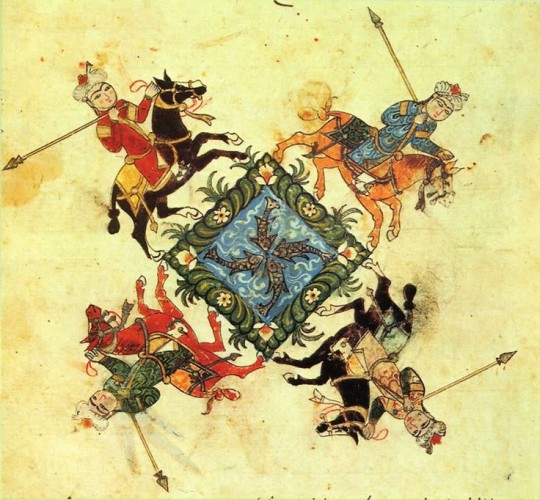
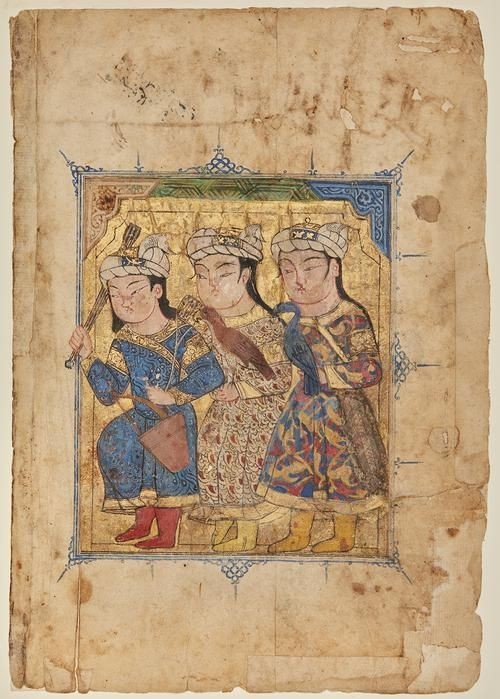
In my previous post I noted a similarly to this robe and the Central Asian and Persian robes I'd seen from a different century, but was hesitant to connect them. Now I'm sure of a connection. The waist seam is confirmed! There are still several stylistic differences, though:
1. The Qabā', in Syrian and Egyptian depictions, typically combines a round neckline with the cross over collar. The Persian Qabā' typically does not have a round neckline.
2. The Qabā' usually has what looks like a gathered skirt, not a pleated one, as the Tieli does. The Terlig sometimes has a gathered skirt as well, as does the Jama.
3. The Syrian and Egyptian Qabā' is decorated with strips of gold, not with a cloud collar. The Persian Qabā' often has a cloud collar, which it inherits from the Terlig, and I have seen an Angarkha from Lahore with a cloud collar as well. It sometimes has bands. The Seljuk Qabā' sometimes has bands, and sometimes has a rank badge (more commonly found in Chinese court dress). As an aside, I recently found a British drawing (from life, presumably) of an Egyptian envoy in a garment similar to an Angarkha as well...
4. The Qabā' in Syrian and Egyptian depictions often retains the knee or calf length good for horse riding that many other garments in this family moved away from.
5. The Qabā' most likely does not have the corded waist found in the Terlig. There is a gold band around the waist in some depictions that could be a braided waist, but could also be a belt. Unfortunately I don't know of any extant examples from Syria or Egypt that would clarify matters. There is an example which might be Persian that does show this corded waist. Most depictions have no waist detail other than an indication of a waistline.
As far as I know, while this robe spread a little into the Balkans and Eastern Europe (the cloud collar has appeared in some Christian Iconography and a few examples of Terlig like historical garments exist), it did not spread much further west or south of Egypt. However, given the Qabā' has been excluded from discussions of the Terlig's many sons already, it's possible I simply don't know about it, as further iterations in Africa would be excluded as well. As always, I welcome people bringing their own findings to the table.
Further reading: The Dress of the Mongol Empire: Genealogy And Diaspora of the Terlig by Woohyun Cho, Jaeyoon Yi, and Jinyoung Kim
Mongol court dress, identity formation, and global exchange by Eiren L. Shea
https://sartorialegypt.wordpress.com/2022/12/03/a-brief-discussion-of-a-mamluk-robe/ - prev post
http://collections.vam.ac.uk/item/O480307/gown/ - the cloud collar angarkha
https://www.newhanfu.com/6021.html - Discussion of the tieli and yesa
https://www.jstor.org/stable/41917645 - Terlig discussion
https://www.jstor.org/stable/43957434 - general discussion of Yuan clothing with a nice example of a terlig
https://en.unesco.org/silkroad/silk-road-themes/mouvable-heritage-and-museums/robe-decorative-braided-waist-band-0 - Terlig example
A Preliminary Study of Mongol Costumes in the Ming Dynasty by Luo Wei
https://m.terms.naver.com/entry.naver?cid=46671&docId=563301&categoryId=46671 - Cheolik
Arab dress: a short history; from the dawn of Islam to modern times by Yedida Stillman
https://lugatism.com/outer-garments-in-the-mamluk-sultanate/#3-_Qaba_qba - the Qaba and other dress in the Mamluk era
https://www.agakhanmuseum.org/collection/artifact/robe-AKM677 - a robe which may be Persian or Central Asian with the corded waist
Additionally, blogs like @ziseviolet and @fouryearsofshades post about hanfu, including the tieli and yesa.
138 notes
·
View notes
Text

Egyptian dancers, Egypt, by virtualexpodubai
#egyptian#egypt#africa#north africa#folk clothing#traditional clothing#traditional fashion#cultural clothing
153 notes
·
View notes
Text

I've decided to combine the previous fashion charts together so I wouldn't have to go back and forth between charts just to look for outfits to draw, I also took the opportunity to add new outfits and edit some of the original outfits on the chart because I felt that the original felt..."lacking" to put it bluntly.
I did however kept the original versions for documation purposes and because I felt that some of you guys may like the old outfits better.
Originals:
Link
Link
Outfits:
~Stardust Crusaders 1988 - 89~
- Main outfit:
This is what she wears most of the time throughout Part 3, you'd think she look harmless but looks can be deceiving when you're a servant of DIO. The outfit consists of a black and orange baseball cap worn backwards (possibly a San Francisco Giants hat), a light and dark purple hoodie that exposes her shoulders, a black crop-top with white lining, a red belt, bluish-lilac jeans with rolled up legs, light purple socks, and almond colored high-top sneakers.
- Pajamas:
This is what she wears to bed during 1987, just a simple baggy t-shirt and sport shorts similar to Asuka Langley's, except for the color changes to blueish gray and white and has a Morro Bay, California logo, she does however mostly forgo it for the next outfit of course for reasons.
- DIO's servant:
While serving DIO during her stay in Egypt, she wears more conservative Egyptian clothing during night time hours whenever he's active at night, even when she goes to bed. This is mostly to avoid DIO "noticing her" like he does with his women but makes up the excuse that Cairo gets cold at night. This is comprised of a long grayish-purple button up gown and dark grayish-purple pants, a gray shawl, and white slip ons, I also added colorful beads and golden bracelets to spice it up and match DIO's other servants.
- First arrival to Egypt:
This is what she wore during her first arrival to Egypt after agreeing to join DIO's side, taking place a year before "Stardust Crusaders". I know it looked a little too touristy, but it would make sense since this her first time in Egypt, with the only thing she knew about the country are ancient civilizations, historical monuments, and very hot weather.
- DIO's World:
She wears this shortly before and during "DIO's World", the last arc in "Stardust Crusaders", right after she befriended a hospitalized Kakyoin, showing that she's slowly shedding her DIO's slave persona and becoming an unofficial Crusader, the star accessories she wears pretty much shows this. She also wear's Joseph's breathing mask rigged with Hamon to gain the Crusaders' trust, being warned that it will go off if she removes it.
- End of Part 3:
This is the same outfit as the previous one, except it's all dirtied up, torn, and bloodied from her last fight with DIO, furious with him for using her and murdering Kakyoin in cold blood. It was during that fight that she lost her arm to him and got as badly injured as Polnareff, putting her out of commission. She would later get a prosthetic arm from the SPW Foundation before taking the plane to Japan with Jotaro and Joseph.
~Diamond Is Unbreakable 1999~
- Wedding dress:
The dress that Medea wore for her and Keiji's wedding a few years before "Diamond is Unbreakable" took place. I mean come on, she becomes a wife and mother in Part 4, right? We might as well show off the dress for it... And yes, she wore her glove over her mechanical arm, gotta make your prosthetics look fabulous to. Sorry if it doesn't look fantastical though, that's the best I can come up with.
- School Teacher:
This is what she wears during her stay in Morioh, Japan as a History Teacher in Josuke's High School. Medea had noticeably aged and takes on a more mature and feminine look while still maintaining some of her traits from her younger years, her hair also grew longer and straighter down to her lower back. She is seen wearing a orchid purple suit with a black turtle neck underneath, and grayish brown slip ons, she also has her hair tied up in a bun. I also added a white belt to spice it up a little, give it a stylish 90's look.
- Casual outfit:
On her off days, she wore a white button up shirt and a pair of bluish-lilac jeans with cuffs rolled to the ankles, her hair is also let down, and wears the same slip ons from her School Teacher attire, you'll also notice that her right arm has been replaced by a mechanical prosthetic after her last fight with DIO, similar to Joseph's last fight with Kars.
- Pajamas (circa 1999):
This is what she wears to bed during the 1990's, her pajamas comprised of a grassy green tank top and gray sweats. It's not much but it's a change up from the purple-colored clothing she normally wears.
- Summer time:
This is what she would wear during the first few days of Summer, contains a pair of summer shorts and a baggy "Prince" T-shirt, the only downside is that she gets mistaken for a foreign tourist by the residence of Morioh before being recognized by her friends and coworkers. This is inspired by this outfit from Evangelion.
- "Great Days":
This is the outfit she wore during the 2nd half of Part 4 after Kira goes into hiding as "Kosaku Kawajiri". It's based on the schoolteacher outfit she wore except she wears her hair's down and forgoes her jacket, revealing that her black sweater is actually a sleeveless turtleneck with removable sleeves. She also wears a star neckless and bracelet to go with it, symbolizing her snapping out of her depression to find and defeat Kira alongside Jotaro Kujo.
~Stone Ocean 2011 - 12~
- Main outfit:
This is what she wore for the majority of "Stone Ocean", having grown a lot older and wiser since Part 4. She wears a stylized jacket with pumps and a turtleneck dress underneath instead of flats and trousers, she also wears a band on her arm with a SPW Foundation logo on it, showing that she is now affiliated with the group to bust her daughter Noriko out of prison, save Jotaro's life, and kick Pucci's ass. Her hair has also been cut short into a pixie cut, symbolizing her growth and wisdom.
~Non-Canon stories~
- "A Date with a Vampire"
It's an evening dress that DIO gifts her for her 19th birthday as a way to "express gratitude" for her services, Medea of course doesn't want it because she knows DIO's just finding any excuse to objectify her or flaunt her around like a purebred puppy. The outfit mostly consists of a plum purple dress with long sleeves, short bottoms, and exposed shoulders, light purple footwear, silver braceletes, a fake wedding ring, and a silver necklace with three garnets, she also wears heavy makeup(curtosy of Mariah and Midler). This attire is mostly for RPs and dribbles, not Jojo OC canon, but I'm drawing it anyways because she looks fantastic in it.
OC belongs to me
Base belongs to Rainfall-Bases
Blank base here: BASE 272 - girl with no boots by Rainfall-Bases on DeviantArt
#artwork#jojo's bizarre adventure#jojo oc#oc#concept art#anime base#fashion#egyptian fashion#1980's fashion#1990's fashion#2010's fashion#wedding dress#evening wear#summer wear#update#final
9 notes
·
View notes
Text
Daenerys with big Egyptian wig and different dragons (AU). The dragons are named Hrakkar (white, silver & black one), Vermilion (red & gold one) and Dreamer (blue & pink one). Hrakkar is the big and feral one (mirrorring Drogon, ), and her (she's a she 😊 - or is she 😁 ?) color pattern does kind of also suggest Jon's direwolf Ghost. She is very protective of Dany (maybe too much). Vermilion's concept is "well, why not a RED dragon like the Targ sigil ?". He's a funny lovable little guy who can be a bit unruly (tongue's out 😝). Dreamer is very obviously inspired by Dreamfyre, the dragon of Rhaena & Helaena Targaryen. She's Dreamfyre come again, if you please. Tribute to Daenerys' own dreamer powers. She's sweet and rather obedient, and very much in love with her mom. A bit clingy too 🥰.

#daenerys stormborn#daenerys targaryen#house targaryen#asoiaf#different dragons au#jon snow#kinda#ghost the direwolf#valyrianscrolls#ancient egypt#egyptian fashion#egyptian daenerys#dreamfyre#dreamer#hrakkar#vermilion
20 notes
·
View notes
Text
Time Travel Question 35: Ancient History XVI and Earlier
These Questions are the result of suggestions from the previous iteration.
This category may include suggestions made too late to fall into the correct earlier time grouping. Basically, I'd already moved on to human history, but I'd periodically get a pre-homin suggestion, hence the occasional random item waaay out of it's time period, rather than reopen the category.
In some cases a culture lasted a really long time and I grouped them by whether it was likely the later or earlier grouping made the most sense with the information I had. (Invention ofs tend to fall in an earlier grouping if it's still open. Ones that imply height of or just before something tend to get grouped later, but not always. Sometimes I'll split two different things from the same culture into different polls because they involve separate research goals or the like).
Please add new suggestions below if you have them for future consideration. All cultures and time periods welcome.
#Time Travel#Cybele#Ancient World#Trans History#Vesuvius#Pompeii#Roman Empire#Bog Mummies#Fashion History#Tyrian Purple#Bronze Age#Iron Age#Indigenous History#Egyptian Blue#Mediterranean#Mediterranean Sea#African History#Western Asian History#European History#Queer History#Epidaurus
244 notes
·
View notes